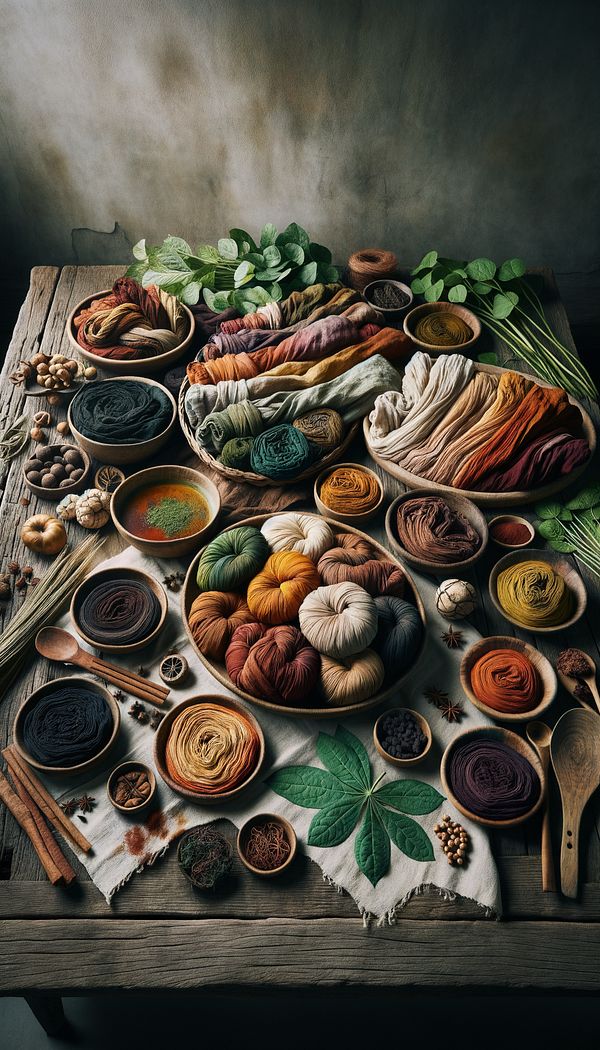What is Vegetable Dye?
Vegetable dye refers to a natural dye derived from plants, including roots, berries, bark, leaves, and wood.
Description
Vegetable dye is a term embracing the wide array of natural dyes derived from plant sources. These dyes are obtained by processing various parts of plants, such as roots, berries, bark, leaves, and wood. Unlike synthetic dyes, which are produced through chemical processes, vegetable dyes are celebrated for their natural origins, making them a popular choice for individuals prioritizing sustainability and eco-friendly practices in interior design.
The appeal of vegetable dyes lies in their ability to produce a unique, varied palette of colors that embody a sense of warmth and natural beauty. The colors achieved through vegetable dyeing are typically more subtle and deep, often changing and developing a patina over time. Additionally, the process of extracting and applying these dyes tends to be less harmful to the environment, owing to the renewable nature of their sources and the traditional methods used in their creation.
In interior design, vegetable dyes are often used in the creation of textiles and upholstery, including fabrics for furniture, curtains, and rugs. They are also applied in the production of wallpapers and in certain decorative objects, offering designers a way to imbue spaces with colors that carry a story of tradition, nature, and sustainability.
Usage
In the context of interior design, vegetable dyes are commonly used in the creation of eco-friendly and sustainably sourced textiles. These natural dyes can be found in items such as handwoven rugs, organic cotton curtains, and naturally dyed upholstery fabrics. Designers might also incorporate vegetable-dyed wallpapers or decorative objects to add a touch of organic elegance and depth to a space.
FAQs
-
How are vegetable dyes made?
Vegetable dyes are made by extracting color from plant materials, such as roots, berries, bark, leaves, and wood, through various methods, including boiling, fermenting, or crushing. The extracted dye is then used to color textiles or other materials.
-
Are vegetable dyes safe for the environment?
Yes, vegetable dyes are generally considered safe for the environment. They are derived from renewable plant sources and their production methods tend to be less polluting than those of synthetic dyes.
-
Do vegetable dyes fade over time?
Vegetable-dyed products may fade or change slightly in color over time, especially when exposed to sunlight. This is seen by many as a desirable quality that adds character and depth to the material.
-
Can vegetable dyes produce a wide range of colors?
Yes, vegetable dyes can produce a wide range of colors, though the palette is typically more muted and natural compared to synthetic dyes. The exact shade can vary depending on the source material and dyeing technique.
Practical Application
When incorporating vegetable-dyed materials into an interior design project, consider the lighting and use of the space, as natural dyes may fade or change when exposed to sunlight. To preserve the natural beauty of vegetable-dyed textiles, opt for indirect lighting or UV-protective window treatments. Additionally, embracing the natural variations and imperfections in color and texture can add depth and authenticity to the design.
-
Materials & Textiles360 articles
-
Textiles & Upholstery252 articles
-
Sustainability & Eco-Friendly Design69 articles
-
HerringboneHerringbone refers to a distinctive V-shaped weaving or tiling pattern.
-
Coil SpringsCoil springs are components used in the construction of seating and mattresses to offer support and comfort.
-
Sinuous SpringsSinuous springs are S-shaped springs that are used in upholstered furniture to provide support.
-
UnityUnity in interior design refers to the harmonious arrangement of elements within a space that creates a cohesive and coherent look.
-
Squab CushionA squab cushion is a thick, upholstered, flat seat cushion.
